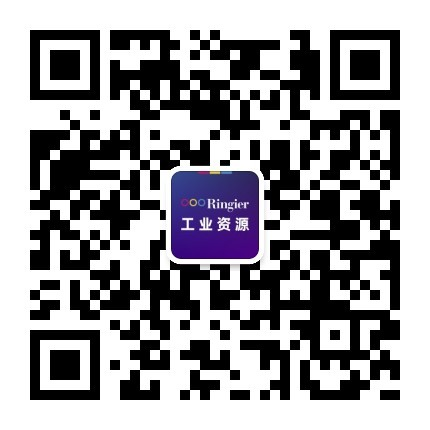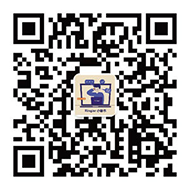In all of modern history, the world has witnessed a total of three Industrial Revolutions, with all signs pointing toward the impending birth of a fourth one. Each revolution saw significant jumps in productivity and efficiency, and corresponding reductions in costs. Today, manufacturing practices are evolving to include 'cyber-physical' production systems controlled with smart products and the far-reaching internet 'cloud'.
With regard to quality control for the automotive industry, the 'smart' factory revolution has brought about changes in manufacturers' measurement needs. The conventional factory and its incumbent methods are no longer ideal in this new environment. Increasingly, climate controlled metrology labs are making way for in-line inspection systems that enable quick assessment and prompt corrective Mobile precision made easy in automotive applications action. Single-use measurement tools and template-type productivity tools (e.g. check fixtures) are also slowly becoming obsolete. Replacing them are new devices that cater to multiple application needs, and that allow for machine-to-machine collaboration, cloud-based data inspections, and digital engineering processes.
Roles of 3D coordinate technology in the automotive sector
For an industry such as automotive manufacturing that carries out high volumes of inspection daily, 3D coordinate measurement is indispensable to its operations. The technology contributes to better running automotive production in the new manufacturing environment in some ways. As a result of changing market demands, the automotive industry's measurement needs have also evolved over the years.
Manufacturers used to rely on fixed coordinate measurement machines (CMMs) to perform inspection checks. While highly precise, one of the greatest drawbacks, however, was the device's inability to provide accurate results in thermally unstable environments like the shop floor. In response to automotive manufacturers' cost-control needs, metrology suppliers began to develop devices that maximise efficiency, by eliminating the time and effort that manufacturers spent on transporting components to and from measurement rooms. The portable CMM - a robust device that provides highly accurate readings even under the harsh conditions of the shop floor – was thus born. In essence, inspection checks are being moved closer to the production line, to a point where manufacturers demand the ability to complete tasks without even moving components off the line.
The digital data that 3D coordinate technology provides is exceptionally useful for manufacturers that practice Production Part Approval Process (PPAP).
Regardless of where along the supply chain a component supplier is present, the PPAP industry standard requires that each item of output fulfils design specifications consistently, as spelt out by the client. In that way, the automotive manufacturer is given full assurance of its component suppliers and their production processes. 3D coordinate technology has facilitated the execution of PPAP in the automotive industry today. The speed and consistency in which measurements are acquired by 3D coordinate devices enable both suppliers and manufacturers to communicate their requirements and results clearly and easily. In a smart factory environment where machines 'talk' to one another, precision and automated inspection are key factors for manufacturers to achieve efficiency.
Today, there are 3D measurement devices that provide those capabilities to make M2M collaboration a reality. Also, changes in market demand for non-standard auto parts imply that manufacturers need to possess highly flexible production systems. To cope with varied needs, manufacturers seek out versatile tools that handle multiple applications and flexible part volumes, so as to cater to as many options as possible at the lowest cost.
Another benefit is that with the emergence of this engineering discipline, manufacturers have been able to improve and develop their production processes and output with better accuracy and consistency. Advancements in 3D coordinate technology, in particular point cloud solutions, have caused the trend to escalate further.
Lastly, part of that which supports the change in the new manufacturing landscape is the growing popularity of cloud computing and big data analytics. The availability of cloud-based applications for 3D coordinate measurements enables data consistency and integrity, allowing resources (e.g. software information) to be shared across readily.
Portable 3D coordinate-based metrology systems
Portable 3D coordinate technology exists in several forms, including point-to-point contact instruments (e.g. articulated arms and laser trackers), non-contact laser line scanners, and 3D imagers. Fundamentally, these devices provide the benefits of CMMs with the added versatility of being portable, which allows the user to deploy wherever there is a need. In addition to being less cost-prohibitive than fixed CMMs, portable CMMs do not require a controlled environment, making it easier on the pockets to operate and maintain them.
One of the most common portable CMM devices available is the articulated arm. Equipped with several articulating joints, these measurement arms are able to determine and record the location of a probe in 3D space and report the results through software. To ascertain the position of a probe, the arms contain proprietary glass discs called encoders in each joint, and these encoders calculate the probe's position as the arm moves freely throughout its workspace. Typically, articulated arms come in models with either six or seven axes of rotation, providing the user with flexibility while performing measurements. At FARO, articulated arms come in a range of lengths (between 1.2m to 3.7m) to cater to different measuring volumes.
Capable of providing volumetric accuracies of up to 23 microns (0.023mm) and weighing in at about 10kg (model dependent), the FaroArm line of products offers accuracy, precision, and portability all at once. This enables easy pick-up and deployment of the device around a facility, even for a one-man operation. Apart from the articulated arm, another device that performs contact measurement is the laser tracker. Designed to handle larger working volumes, laser trackers offer extremely accurate measurements over long ranges.
Put simply, a laser tracker establishes the precise location of a target in spherical space by measuring two angles and a distance, each time it takes a measurement. It does so by sending a laser beam to a retro-reflective target, which has to be held against the object being measured. The return beam reenters the laser tracker where the distance to the target can be determined using interferometry or phase shift analysis.
The horizontal and vertical angles to the probe are determined using precision angular encoders attached to the mechanical axis of a gimballed beam steering mechanism. Using the two angle measurements and distance determined by the laser, the laser tracker can report the coordinate location of the probe to extremely high accuracy levels. In addition, the laser tracker can follow or track the target as it moves in real time. This unique feature, coupled with the laser tracker's ability to internally sample points at a rate of up to 16,000 times per second, enables the user to digitize data on complex surfaces and measure the location of moving objects.
In fact, measurement ranges and accuracies have improved significantly in recent years. For instance, the FARO Laser Tracker Vantage's radial measuring range is 80m, and at that range, it captures data at typical accuracies of up to 39 microns (0.039mm). Weighing just under 18kg, the Vantage offers portability and versatility on measuring large parts, no matter where production is located within the plant.
Manufacturers can achieve unprecedented speed and efficiency by capturing more with fewer device moves and shorter routines. As an option, laser line probes can be mounted to articulated arms to provide noncontact
scanning capabilities. This technique is an ideal way to create a dense point cloud, The FARO Laser Tracker Vantage which can be used for tasks such as inspection and reverse engineering. Suitable for delicate objects where touch probing should be avoided, non-contact scanning is a quick way to obtain a full surface model of a part.
The device projects a laser line on the part to be inspected, which is reflected back towards the scanner and captured by a camera. Through standard triangulation methods, 3D locations are determined and recorded accordingly. By moving the laser line across the entire surface, the probe captures the 3D profile for further processing. Designed as a portable solution, the 3D imager is a high performance, accurate, non-contact system, capable of capturing surface data of up to four million discrete points in mere seconds. The device uses light projection technology and a camera to generate true representations of any part placed in its field-of-view (around 0.5m x 0.375m). For larger parts, reference points can be added so that separate sets of point clouds can be stitched together when needed.
Applications in leading vehicle brands
Each of the 3D coordinate measurement devices introduced earlier suits different needs. Mitsubishi Motors Corporation, the world leader in mass production of electric vehicles (EV), has one of its production bases in Okayama, Japan – a place where many other automobile-related companies choose to locate. Founded in 2011, Okayama Vehicle Engineering Center for the next EV (OVEC) is a network of 16 companies from the prefecture, formed in response to the changing automobile industry.
The development of OVEC-ONE was based on Mitsubishi's Galant Fortis model. To convert it into an EV, unwanted components such as the car engine had to be removed and replaced with other components (e.g. inverter, battery, compressor, heater etc.). The challenge was to layout 10 new components of varied sizes and shapes thoughtfully in the available space. To ensure that all the equipment fits in the space under the hood, the team acquired 3D data of each item with non-contact measurement, using FaroArm. With the 3D CAD data, the team decided on the layout virtually, checking that the components do not interfere with each other.
Founded in 1991, FAW-Volkswagen Automotive Co., Ltd is a Chinese joint venture between FAW Group Corporation and the Volkswagen Group. Over in its Chengdu plant in China, FAW-Volkswagen specialises in the production and assembly of the Jetta and Sagitar car models. A large component of the assembly line is the conveyor system on which all the vehicles are transported. FAW-Volkswagen utilises an overhead conveyor to move vehicles around the plant, and regular inspection and alignment checks on the equipment are necessary to ensure optimal performance.
The company now deploys a 12-ft FaroArm on the maintenance platform, located right next to the assembly line. Whenever a glitch occurs on the production line, the team would use the device to pinpoint the precise problem area before zooming into it. Since then, FAW-Volkswagen's inspection and alignment checks on its manufacturing. Founded in 1991, FAW-Volkswagen Automotive Co., Ltd is a Chinese joint venture between FAW Group Corporation and the Volkswagen Group. Over in its Chengdu plant in China, FAW-Volkswagen specialises in the production and assembly of the Jetta and Sagitar car models. A large component of the assembly line is the conveyor system on which all the vehicles are transported.
FAW-Volkswagen utilises an overhead conveyor to move vehicles around the plant, and regular inspection and alignment checks on the equipment are necessary to ensure optimal performance systems have become much more precise and simple. This, in turn, has kept the plant operating at its best.
NIKE













